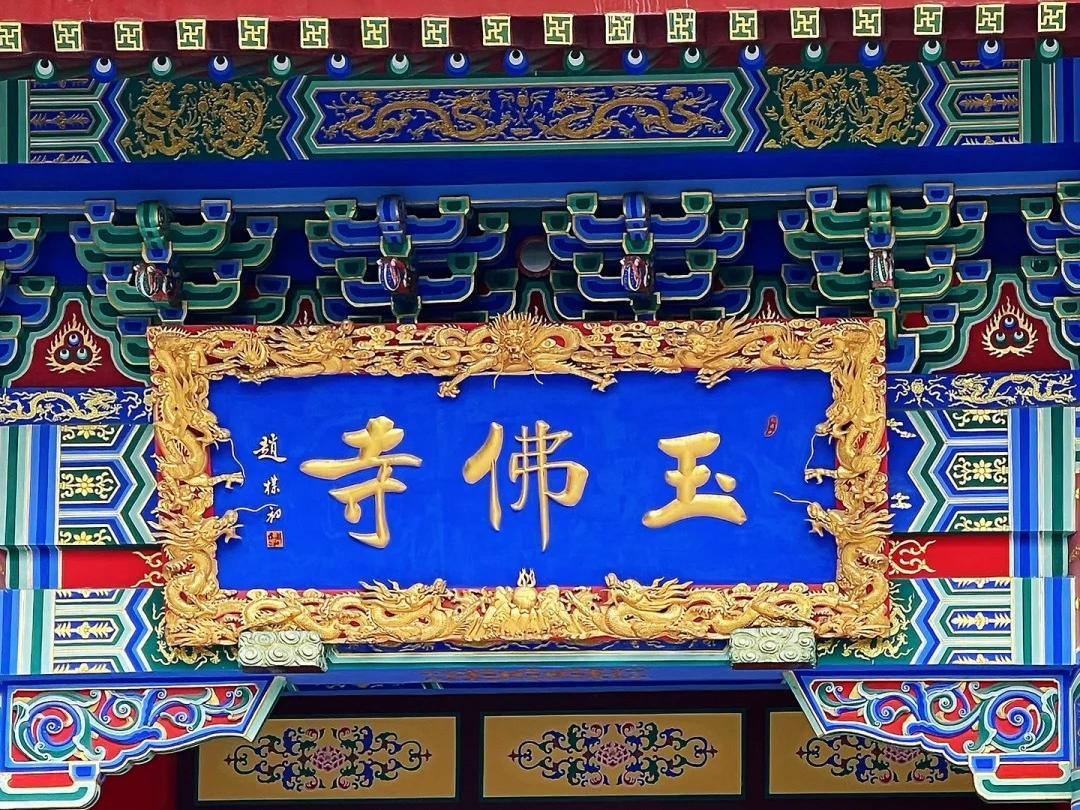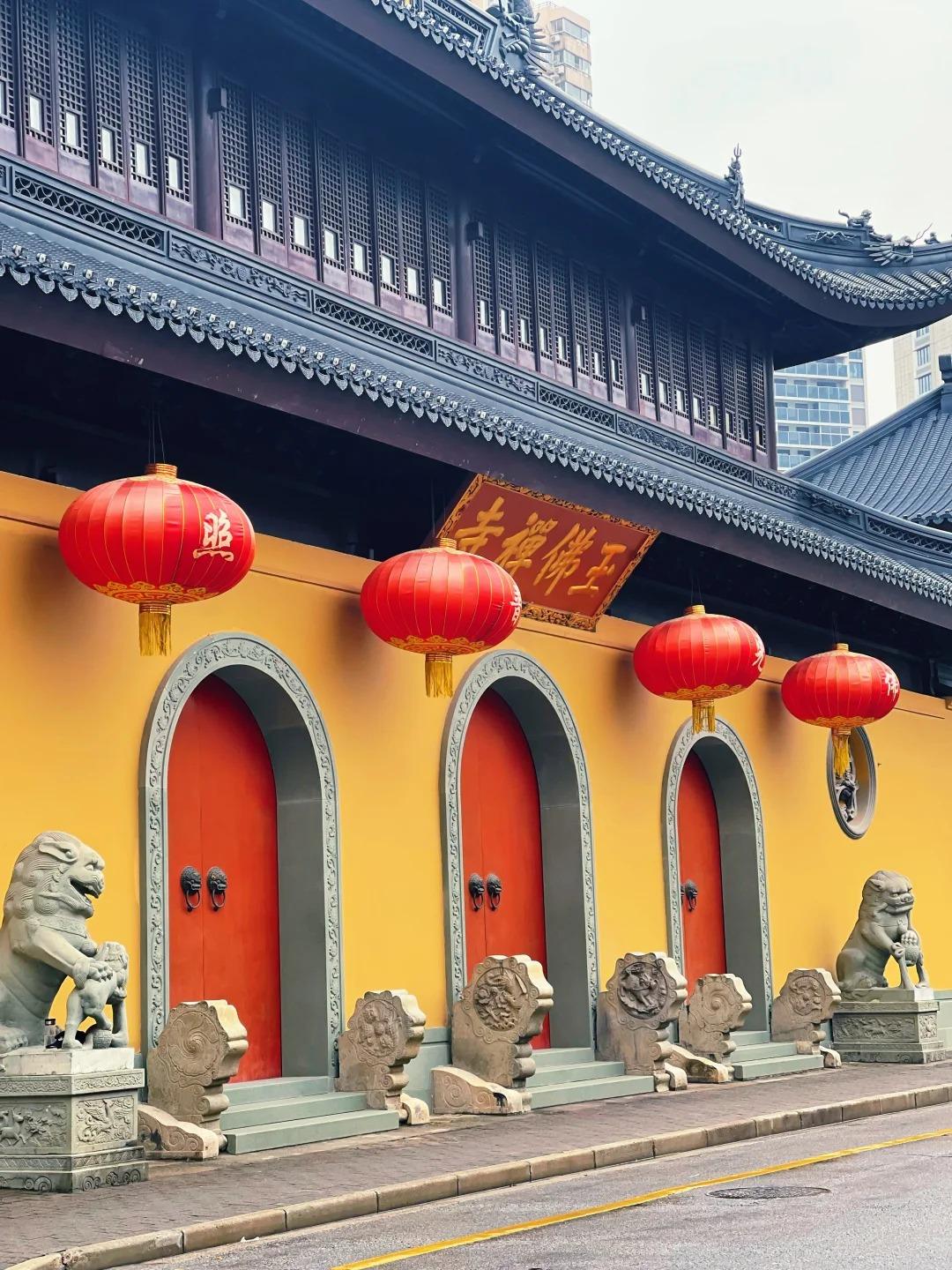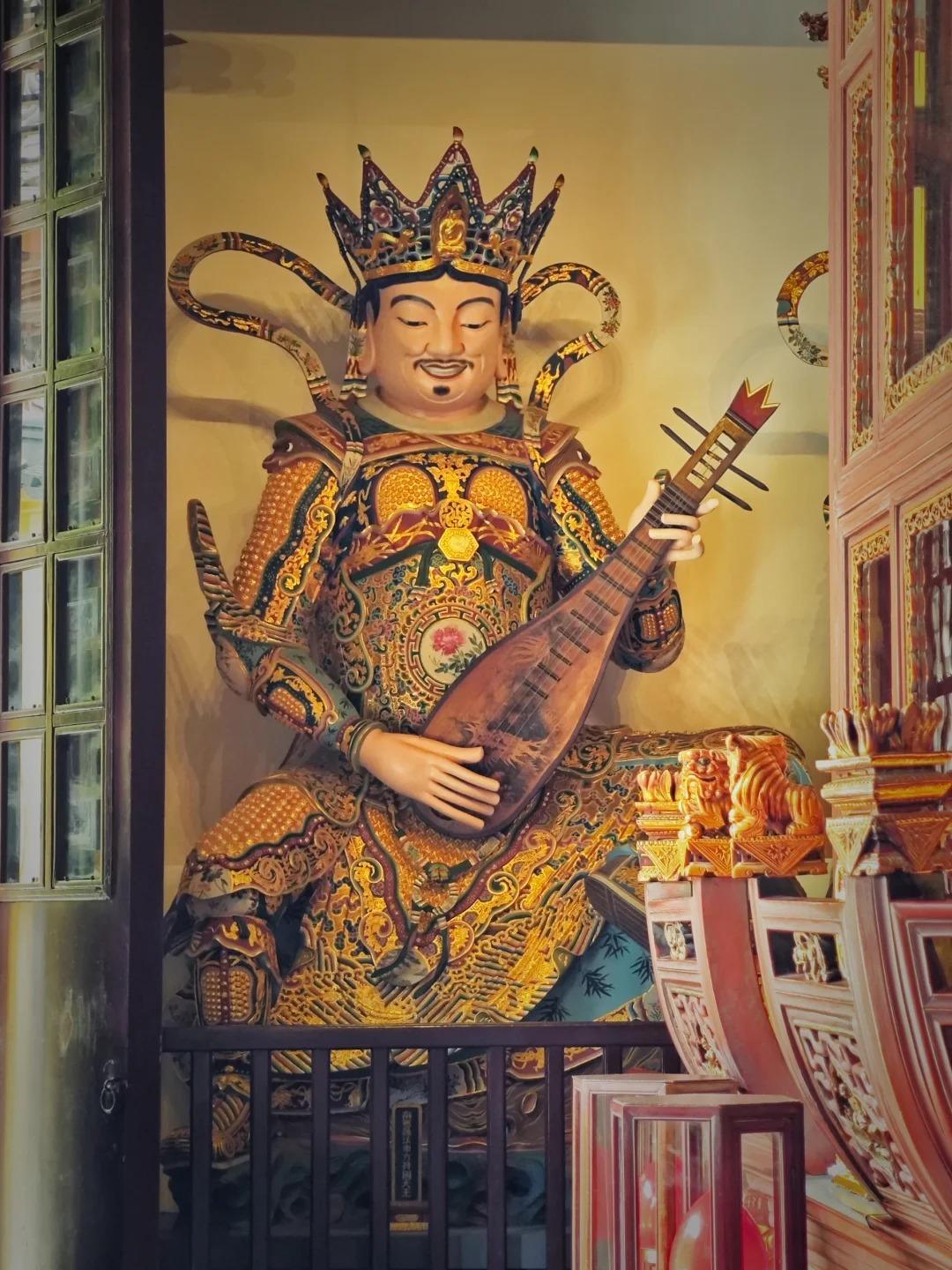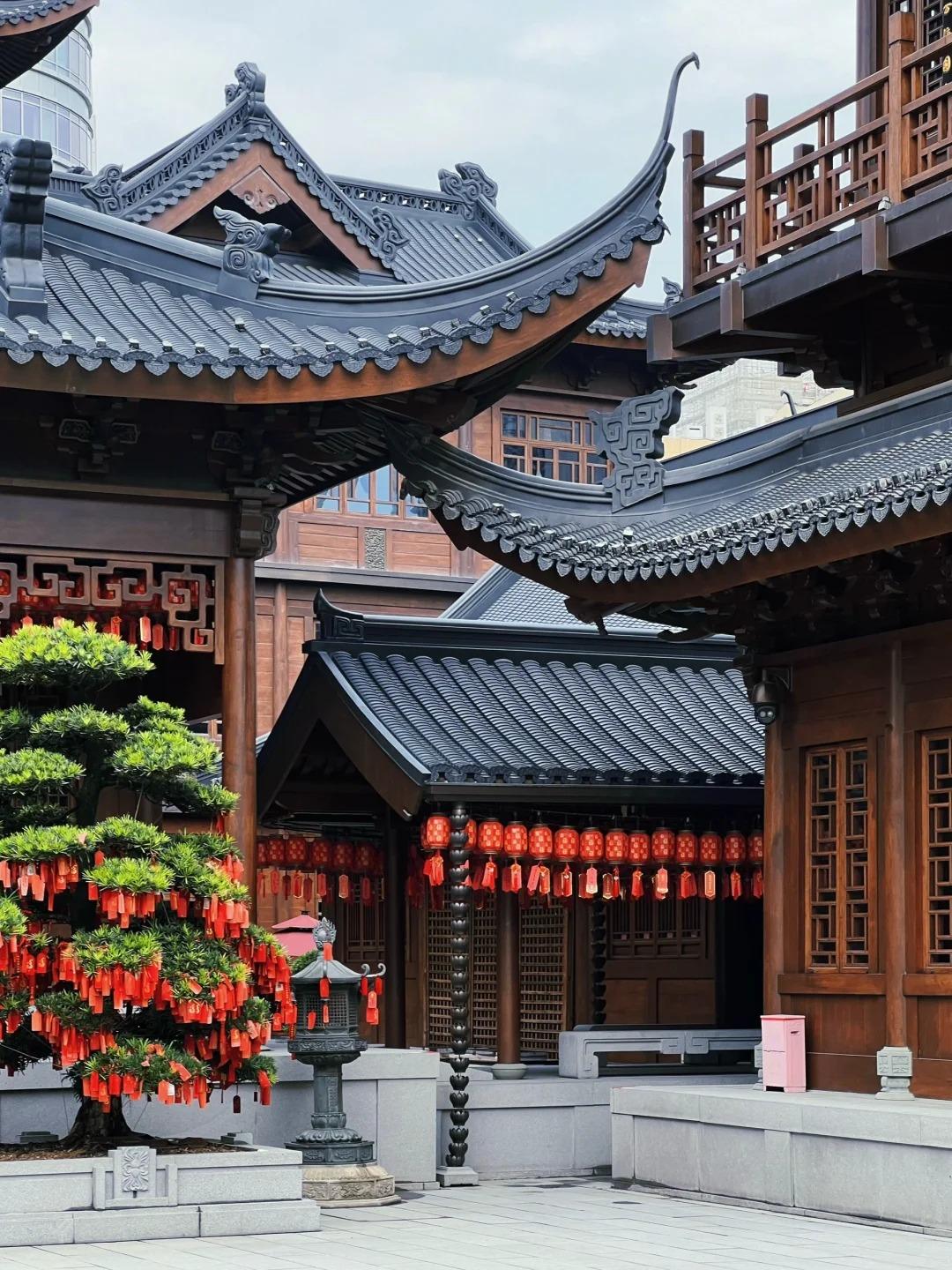Introduction to the Jade Buddha Temple
Nestled in the bustling heart of Shanghai, the Jade Buddha Temple stands as a serene oasis of Buddhist spirituality. Founded in 1882 during the Qing Dynasty, this temple has become a cornerstone of Chinese Buddhism in Shanghai.
The temple’s inception is linked to a monk named Huigen, who brought two jade Buddha statues from Burma. Initially housed in a temporary structure, the current temple was rebuilt in 1928 after a fire, showcasing a harmonious blend of traditional Chinese architectural styles.
With its vibrant yellow walls and upturned eaves, the Jade Buddha Temple exemplifies the Song dynasty architectural aesthetic, creating a stark yet beautiful contrast against Shanghai’s modern skyline.

The Jade Buddha Statues
At the heart of the temple’s allure are two exquisite jade Buddha statues:
- The Sitting Buddha: A 1.95-meter-tall statue weighing 3 tons, carved from a single piece of white jade.
- The Reclining Buddha: A smaller statue depicting Buddha’s entry into Nirvana.
These statues, brought from Burma (now Myanmar) via Singapore, represent not just artistic mastery but also serve as profound symbols of peace and tranquility in Buddhist teachings.
Visitors can view these masterpieces in dedicated halls, observing respectful silence and refraining from photography to maintain the sacred atmosphere.

Temple Architecture and Layout
The Jade Buddha Temple’s layout reflects traditional Chinese Buddhist architecture:
- Grand Hall (Daxiong Baodian): Houses three golden Buddhas representing past, present, and future
- Hall of Heavenly Kings (Tianwang Dian): Features statues of the four heavenly kings
- Jade Buddha Hall: Home to the sitting jade Buddha statue
The temple’s design incorporates open courtyards, creating a sense of space and tranquility. Intricate wood carvings, colorful paintings, and burnished pillars adorn the halls, each element rich with symbolism.
Recent renovations have focused on preserving the temple’s historical integrity while enhancing visitor facilities, including improved accessibility and informational displays.

Religious and Cultural Significance
| Activity | Time | Description |
|---|---|---|
| Morning Chanting | 4:30 AM | Monks perform daily rituals |
| Incense Offering | All Day | Visitors can offer incense and prayers |
| Evening Bell Ringing | 5:00 PM | Marks the end of the day’s religious activities |
The Jade Buddha Temple plays a vital role in Shanghai’s Buddhist community, serving as both a place of worship and a center for Buddhist education. Daily rituals, including chanting and incense offerings, provide a glimpse into monastic life.
Major Buddhist festivals, such as Buddha’s Birthday and the Laba Festival, are celebrated with special ceremonies and events. The temple also offers regular lectures on Buddhist philosophy and meditation classes, fostering a deeper understanding of Buddhist teachings among both locals and visitors.
Visitor Experience
To make the most of your visit:
- Opt for a guided tour to gain deeper insights into the temple’s history and significance
- Visit early morning or late afternoon to avoid crowds and experience the temple’s serene atmosphere
- Dress modestly, covering shoulders and knees as a sign of respect
- Photography is generally allowed in the courtyards but prohibited in the Buddha halls
The temple complex includes a vegetarian restaurant offering authentic Buddhist cuisine and shops selling religious artifacts and souvenirs.

Surrounding Area and Access
Located in Putuo District, the Jade Buddha Temple is easily accessible:
- Metro: Line 13 to Jiangning Road Station, Exit 3
- Bus: Routes 13, 19, 24, 36, 54, 63, 76, 112, 113, 138, 206, 223, 251, or 923
Nearby attractions include the Shanghai Natural History Museum and Jing’an Temple, making it easy to combine visits for a full day of cultural exploration.
Limited parking is available, and the temple has made efforts to improve accessibility for visitors with mobility issues, including ramps and elevators in certain areas.

Preservation and Future Plans
The Jade Buddha Temple continues to evolve while preserving its rich heritage:
- Ongoing restoration projects focus on maintaining the ancient structures and artworks
- Digital archiving initiatives are underway to document and preserve the temple’s historical artifacts
- Future plans include expanding educational programs and international Buddhist exchanges
As Shanghai grows, the temple remains committed to balancing its role as a tourist attraction with its primary function as a place of worship and spiritual reflection.
The Jade Buddha Temple stands as a testament to Shanghai’s rich cultural tapestry, offering visitors a peaceful retreat and a window into the world of Chinese Buddhism. Whether you’re a spiritual seeker, history enthusiast, or curious traveler, this architectural gem provides a unique and enriching experience in the heart of one of China’s most dynamic cities.






